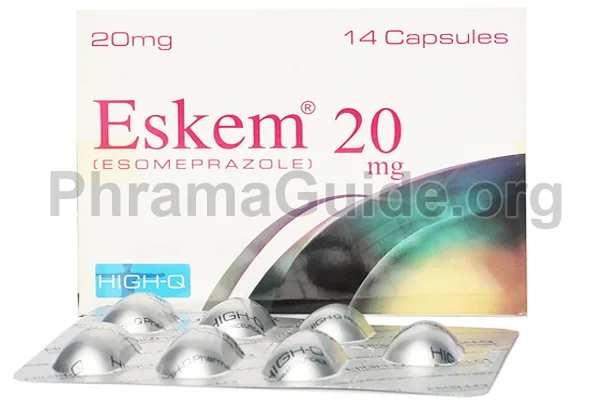Eskem is a medication that belongs to a class of drugs known as proton pump inhibitors (PPIs). It is primarily used to reduce stomach acid and is commonly prescribed for conditions like gastroesophageal reflux disease (GERD), peptic ulcers, and other acid-related gastrointestinal conditions. Like any medication, Eskem can have side effects. Here are some common and less common side effects associated with Eskem.
Common Side Effects
- Headache: Headaches are a relatively common side effect of Eskem.
- Nausea: Some individuals may experience mild nausea while taking Eskem.
- Abdominal Pain: Abdominal discomfort or pain is a possible side effect of Eskem, but it’s generally mild.
Less Common Side Effects
- Diarrhea: Some people may experience diarrhea, but this is a less common side effect of Eskem.
- Constipation: Constipation can occur with prolonged usage of Eskem, though it is not as frequent as diarrhea.
- Flatulence: Increased gas production can sometimes be a side effect of Eskem.
- Dizziness: Dizziness is a less common side effect but may occur in some individuals associated with Eskem.
- Dry Mouth: Dry mouth can occur in rare cases.
- Skin Rash: Skin rashes are a less common side effect of Eskem. If you notice a rash, consult your healthcare provider.
- Changes in Liver Enzymes: Eskem can affect liver function in some people, leading to changes in liver enzyme levels, but this is relatively rare.

What is Eskem?
Eskem is one of the leading brands of Esomeprazole, manufactured and marketed by High Q Pharmaceuticals (Pvt) Ltd, Pakistan.
Eskem : Available Formulations and Strengths
Presently, Eskem is available in Capsules and Injection (intravenous) Forms.
Eskem Capsules : 20mg and 40mg strengths.
Eskem Injection (IV) : 40mg strength.
What Are The Possible Drug Interactions of Eskem?
Eskem reduces stomach acid production, which can affect the absorption of drugs that rely on an acidic environment in the stomach for proper absorption.
- Examples include:
- Antifungal medications like ketoconazole and itraconazole.
- Certain antiretroviral drugs are used to treat HIV, like atazanavir.
- Some osteoporosis medications like alendronate and risedronate.
- To avoid interactions, take these medications at least 2 hours before or after Eskem.
- Plavix (Clopidogrel): Combining Eskem with Plavix, a blood-thinning medication, may reduce the antiplatelet effect of Plavix. This interaction is concerning for individuals with a history of heart disease or those at risk of blood clots. Consider alternative acid-reducing medications like H2-receptor antagonists or discuss the risks and benefits with your healthcare provider.
- Warfarin (Coumadin): Eskem may increase the blood levels of warfarin, an anticoagulant, potentially leading to an increased risk of bleeding. Your healthcare provider may need to adjust the dose of warfarin and monitor your clotting time closely.
- Methotrexate: Eskem can increase the levels of methotrexate in the blood. This may heighten the risk of methotrexate-related side effects. Dose adjustments and close monitoring are necessary when using both medications.
- Digoxin: Eskem can increase the blood levels of digoxin, a medication used to treat heart conditions. This may result in a higher risk of digoxin toxicity, and your digoxin dose may need to be adjusted.
- Cilostazol: There is a potential interaction between Eskem and cilostazol, a medication used to improve the symptoms of intermittent claudication (a circulation disorder). Combining these drugs may increase cilostazol’s blood levels, leading to an increased risk of side effects.
- Other Medications: Eskem may interact with other medications, so it’s essential to discuss your full medication list with your healthcare provider. This includes prescription drugs, over-the-counter medications, and supplements.

Leave A Comment